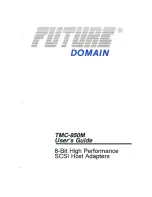
Brocade Adapters Troubleshooting Guide
69
53-1001582-01
Statistics
3
Displaying logical port statistics through HCM
Display logical port statistics by selecting Monitor > Statistics > Logical Port Statistics.
OR
Right-click a logical port from the device tree and select Logical Port Statistics.
Displaying logical port statistics through BCU
Use the lport --stats command to display logical port statistics.
lport –-stats <port_id> [-l lpwwn]
where:
port_id
ID of the port for which you want to display statistics. This could be the
PWWN, port hardware path, or user-specified port name. This could also be
the adapter-index/port-index. For example, to specify adapter 1, port 1 you
would use 1/1 as the port identification.
lpwwn
Logical port world wide name for which you want to display statistics. This is
an optional argument. If the -l lpwwn argument is not specified, the base port
is used.
rpwwn
Remote port world wide name for which you want to display statistics.
Port statistics
Use BCU and HCM to display a variety of port statistics. Following is an overview of HBA and CNA
statistics:
•
For HBAs, statistics include transmitted and received frames and words, received loop
initialization primitive (LIP) event counts, error frames received, loss of synchronization, link
failure and invalid CRS counts, end of frame (EOF) errors, and encoding non-frame errors. Use
these statistics to isolate link and frame errors. For example, loss of synch and loss of signal
errors indicate a physical link problem. To resolve these problems, check cables, SFPs on
adapters
or switch, and patch panel connections.
•
For CNAs, statistics include total transmit and receive counts for different sizes and types of
frames. Data is included on 64-byte to 1519-1522-byte, multicast, broadcast, control, jabber,
drop, control, FCS error, alignment error, code error, pause MAC control, zero pause MAC
control, FCoE pause MAC control, and zero pause MAC control frames.
Displaying statistics through BCU
Use the port --stats BCU command to display statistics for a specified adapter port.
port --stats <port_id>
where:
port_id
ID of the port for which you want to display statistics. This could be the
PWWN, port hardware path, or user-specified port name. This could also be
the adapter-index/port-index. For example, to specify adapter 1, port 1, you
would use 1/1 as the port identification.
















































